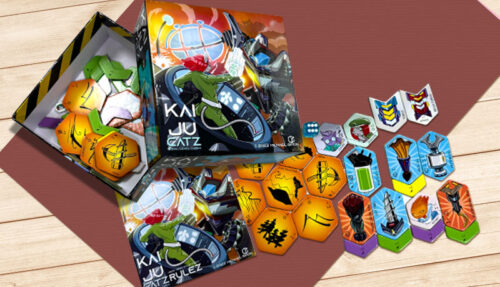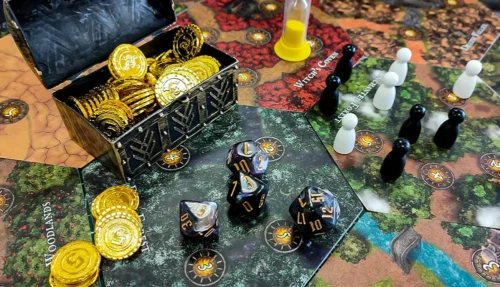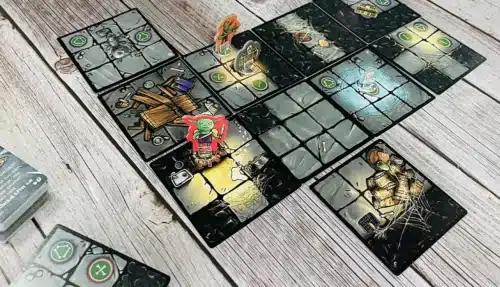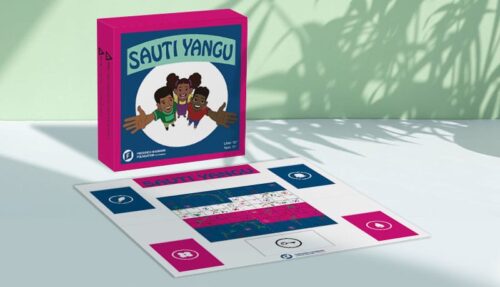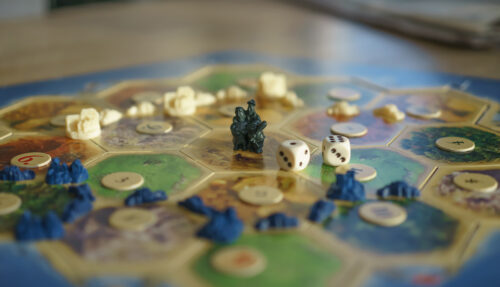There’s a lot of work goes into designing and developing a board game from your first idea to publication. But how much work? And how long will it take? The answer is here
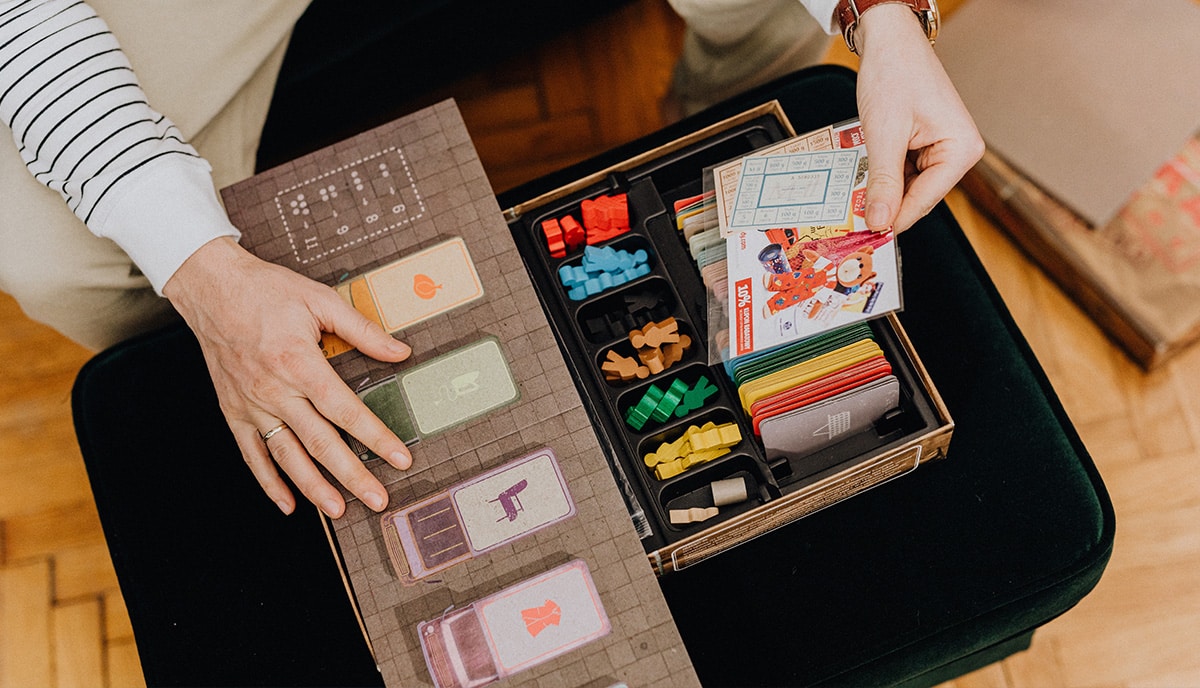
Photo by Karolina Grabowska
Board game design and development — as you’ll know if you’ve already created your own board game or you’ve read our other game posts on this blog — is as much hard work as it is fun. To be successful, you’ll need bucket loads of creativity, flexibility, resilience, passion, perseverance, and confidence. But if you have all those skills and resources and you’re determined to design and publish a board game, you might wonder just how long it takes to bring such a challenging project to conclusion.
There’s no one-size-fits-all answer to this question. So many variables are in play: the complexity of the game, your previous experience, your support network, starting point, available time, and luck. But we can help you get an idea of the kind of timescales to expect and plan for as you develop your game from idea to prototype to publication and sales.
What to expect as a board game developer
Too many newbie independent designers rush into the business of self-publishing a board game with wildly unrealistic expectations. They think it will be easy, fun, and over in a few months. It is fun — and potentially very rewarding — but it’s never easy and takes lots of time and patience. So, let’s unpack how long you can expect things to take in a bit more detail and put some figures into the equation.
How long does it take to design a board game?
We’ll go into this in more detail in just a moment, but to be clear what you’re looking at, let’s dive straight in. The following are ballpark figures, sure, but you should consider them to be minimums rather than maximums when you’re planning your project and calibrating your expectations. So, on average you should allow at least:
- One to three months from finalizing your basic idea to developing your prototype board game
- Another three months to select an artist and graphic designer and get all the artwork completed. Meanwhile, you’ll be writing the content of the rule book and getting that laid out and formatted along with the artwork for the cover and interior
- Up to three months back-and-forth between you, your designer, and your printer to get all the files print-ready, all the components manufactured, and the box completed before you receive a “proof” prototype for approval
- Two to three months for manufacture/printing and delivery of the finished game to you and/or your third-party distributors
So, all told, that’s about a year all-in. And don’t forget that during that year, you’ll also be setting up your crowdfunding campaign, creating and delivering content and updates to your supporters, making contact with potential distributors, and more. In real terms, once the design process is well underway, you can expect a larger slice of your time to be taken up with simultaneous networking, community building, marketing, and promotion.
Realistically, you could get a simple game — maybe one that only needs printing a board and cards and otherwise uses standard components such as pre-manufactured dice and pawns, for example — completed in less time, maybe six to nine months. But you would still probably be looking at a year overall to get it from an idea in your head to a box on the game store shelf. Our best advice is to plan for a year of design, development, promotion, and marketing to arrive at the point of fulfillment and distribution.
How long is a piece of string?
Of course, exactly how long each design and development project takes varies enormously. As the saying goes, the devil is in the detail. If this is your first time developing a board game and you must learn everything as you go, maybe allow a little extra time. It can be a steep learning curve and if you make mistakes along the way, you may need to rewind and reset aspects of your project which can take even more time.
Among the factors that can impact your timescale, you may want to think about:
- Your experience (or lack of it)
- Your working style and the time you have available — efficient and organized or more freestyle and intuitive? Full-time or fitting it in around your day job, family commitments, hobbies, and more?
- Your artist’s, designer’s and printer’s production schedules
- If you have an established community in the real world (a games club, for example) and online (a website, blog, forums, Facebook group, etc.)
- How you’re funding — crowdfunding? Funding from your own pocket? Business or enterprise loan? Arts or design grant?
You can also factor in any number of other factors personal to you. For example, what about working space, play-testing, and networking? Someone with an established network, a private workshop space in their home, and no family making demands on their time will potentially get things done faster than another person who needs to travel to a hired space or grab time at the kitchen table when everyone else is out, or just snatch opportunity here-and-there to work on their board game design and development.
Timing and crowdfunding your board game
One of the more complex factors that can impact how long it takes to design and self-publish your board game is crowdfunding. Most independent game developers prefer Kickstarter and it’s a good place to find people actively looking for interesting game projects to support. Typically, a successful Kickstarter crowd funding campaign can take between one and three months from set up to getting the money in the bank.
In most cases, you’ll need to invest a chunk of your own money to get your game product print-ready before you start your crowdfunding if it’s your first time. It gives you a guarantee and a safety net. Later, when you have one or two successfully self-published games under your belt, you may feel confident enough to start your campaign even in the pre-development stage. By doing a lot of the work first, you can get your prototypes play-tested and reviewed in advance of your first crowdfunding which will give you some proof of the validity of your project if you’re completely unknown in the scene.
But even if you’re an experienced board game developer and you’ve got an established creative team to work with, you’ll still need to factor in funding time on top of actually developing the game itself. With experience, you’ll streamline your game development workflow and build up a “treasure chest” to draw on for the initial funding of each new project, but the time from completing your final prototype to self-publishing, receiving the finished game units and getting them out to your supporters, distributors, and stores, will always take at least six months on top.
Parallel game design
One way that experienced board game self-publishers and professionals maximize their time efficiency is to work on several game projects at the same time. You need to be super-organized to do this well without getting into a total muddle, but if you can do it, you’ll find there are many benefits over and above time-saving. Having more than one board game in development simultaneously allows you to cross-fertilize ideas, dynamically attribute resources where they’re needed most, and keep your options open on which project to prioritize until you have significant feedback.
All that said, we wouldn’t recommend diving straight into parallel game design if this is your first game development project. But it is definitely worth considering for the future. Given the challenges that lie ahead, any approach or process which can save you time and boost your creativity is a bonus card worth picking up when you get the chance.
Prototypes for self-publishing a board game
Something you’ll discover sooner or later is just how repetitive is the board game design and development process. You’ll need to make and remake, tweak and change everything several times as you go through all the stages of bringing a game to the table. For this reason, don’t waste time or money on printing and manufacturing a professional grade prototype too soon. Use homemade “substitute” prototype or digital analogs right up to the point that you know that you have a fully functioning game on your hands. Creating the final prototype is more-or-less identical in terms of costs and time needed as making the finished ready-for-sale version. So long as you’re still iterating and things are changing, cheap, cheerful, and homemade is not only less expensive but will save you a ton of time.
Cost vs production time in board game development
The cost of printing and manufacture of your board game — which will depend in itself on the complexity of the game, the number of custom components, the size and layout, boxing and more — can also have implications for how long it will take to self-publish. For example, most games are printed and manufactured in China. That’s true whether they’re independently published or published by a mainstream publisher. Why?
The reasons are very simple. It’s much cheaper to use an offshore printing company, even when you factor in the costs of packaging and international shipping, for one thing. But it’s also because whereas Chinese companies have invested heavily in the industrial technology to produce games efficiently without loss of quality, the same specialist investment hasn’t been so widespread in other parts of the world. And because the big board game publishers have already developed strong relationships with Chinese companies, the infrastructure and supply chains are already established and easy for the independent game publisher to tap into, too.
But it takes longer to order a product from China than it would in your home territory — if you’re in, say, the USA, UK, or Europe. So, to take advantage of the cost savings available by working with a printer like us — we’re based in Shanghai — you’ll need to factor in an extra few weeks onto your usual delivery time. In most cases, it’s a worthwhile payoff just so long as you’re aware of it in advance and plan for it when calculating your cost/time budget.
A last word
So, in summary, we can say that the time you need to allow to design and self-publish a board game could be anything between six months — with experience, a healthy budget, optimism, and luck — to 12 months or more in most cases. If you’re completely new to the whole process, it’s a good idea to be as generous as you can when allotting time. Remember that the biggest ‘time sucks’ are in areas which are less under your direct control, such as supply chains, manufacturing schedules, and delivery.
It’s a good idea to get in touch with your board game printer/manufacturer earlier rather than later in the process. At QinPrinting we’ll work with you and your designer every step of the way to offer advice, technical information and support, file checking, and more, to make sure that your project runs as smoothly as possible and delivers a beautiful end product of which you can be truly proud. Get in touch anytime to talk through your game design idea and request a preliminary, no-obligation quote. We can’t wait to work with you!






